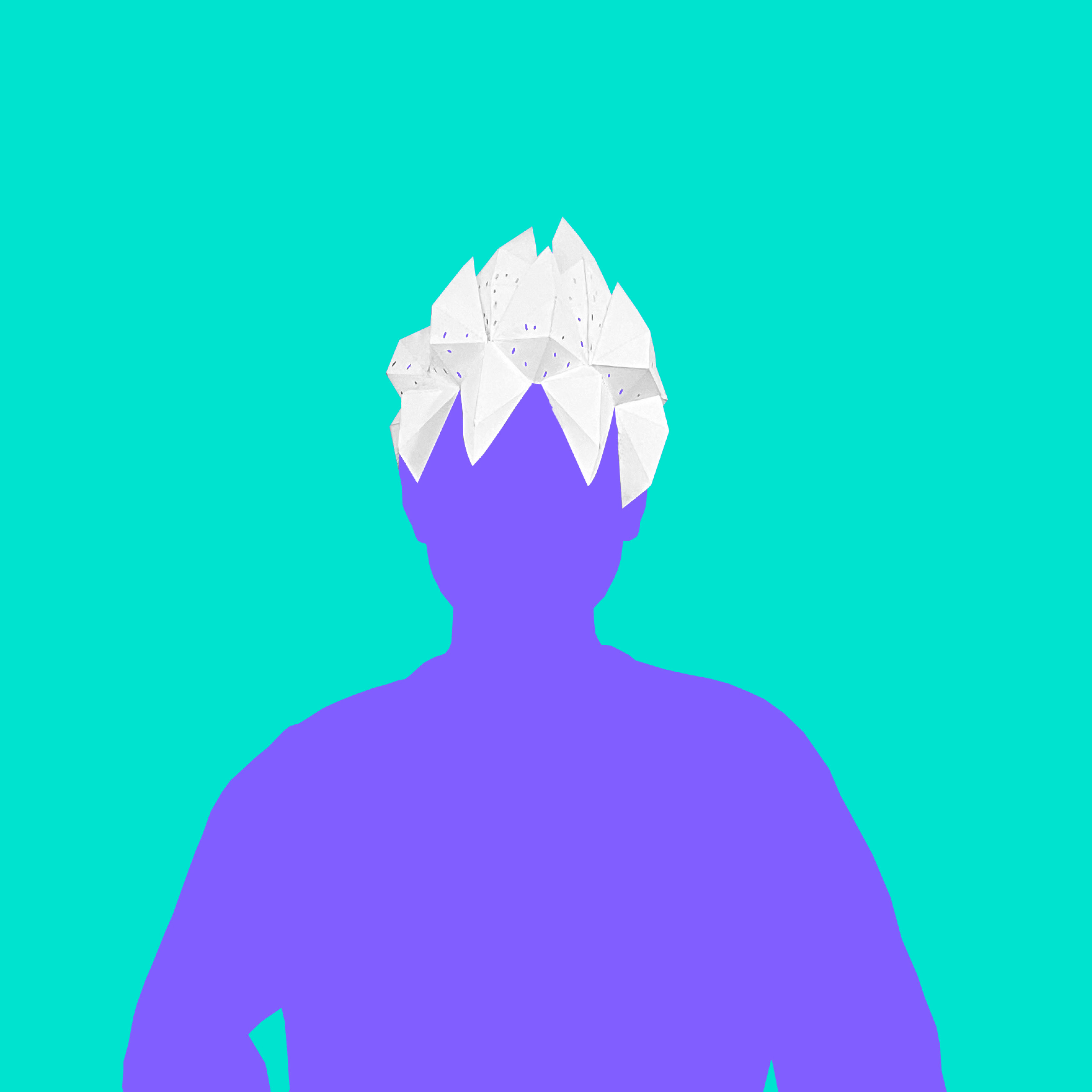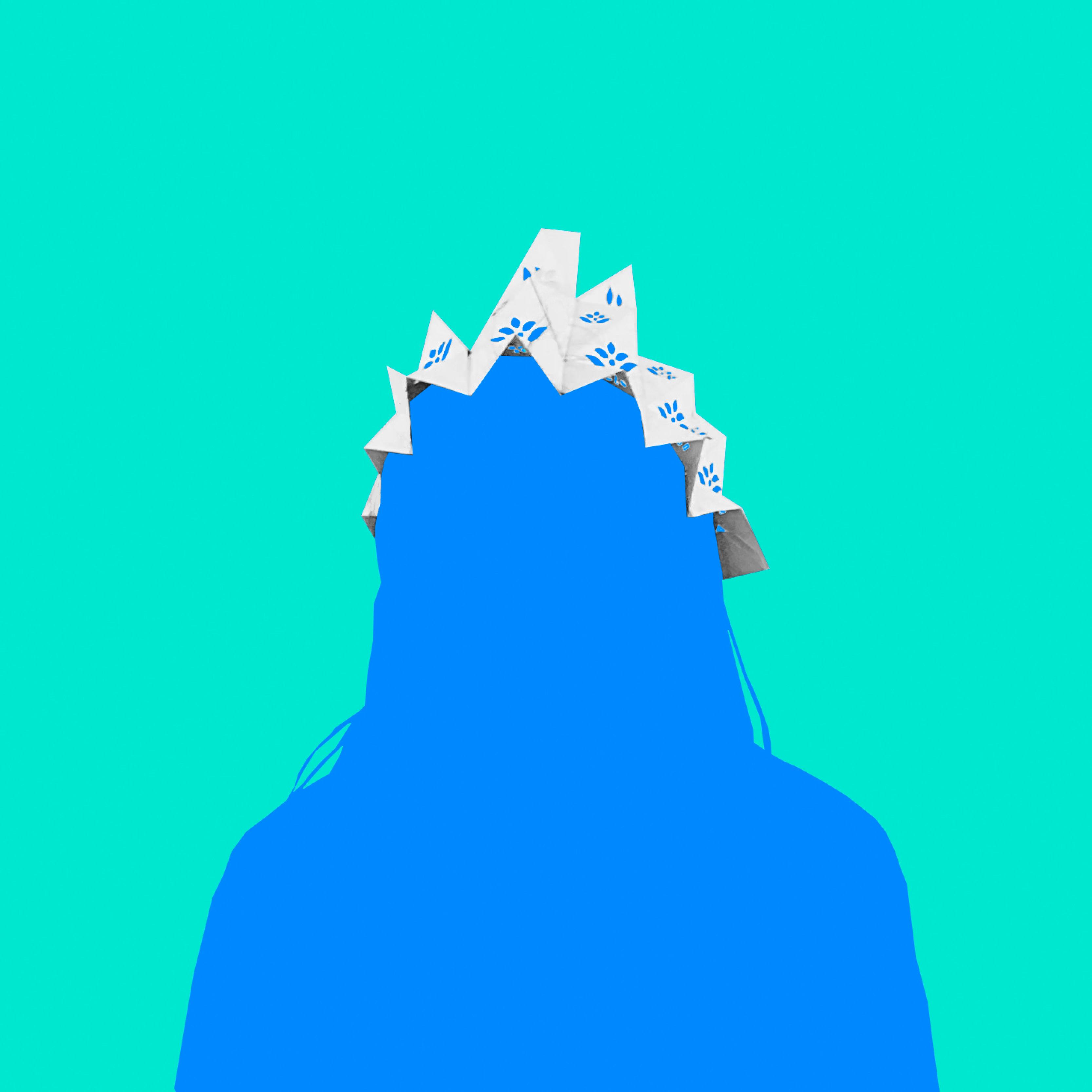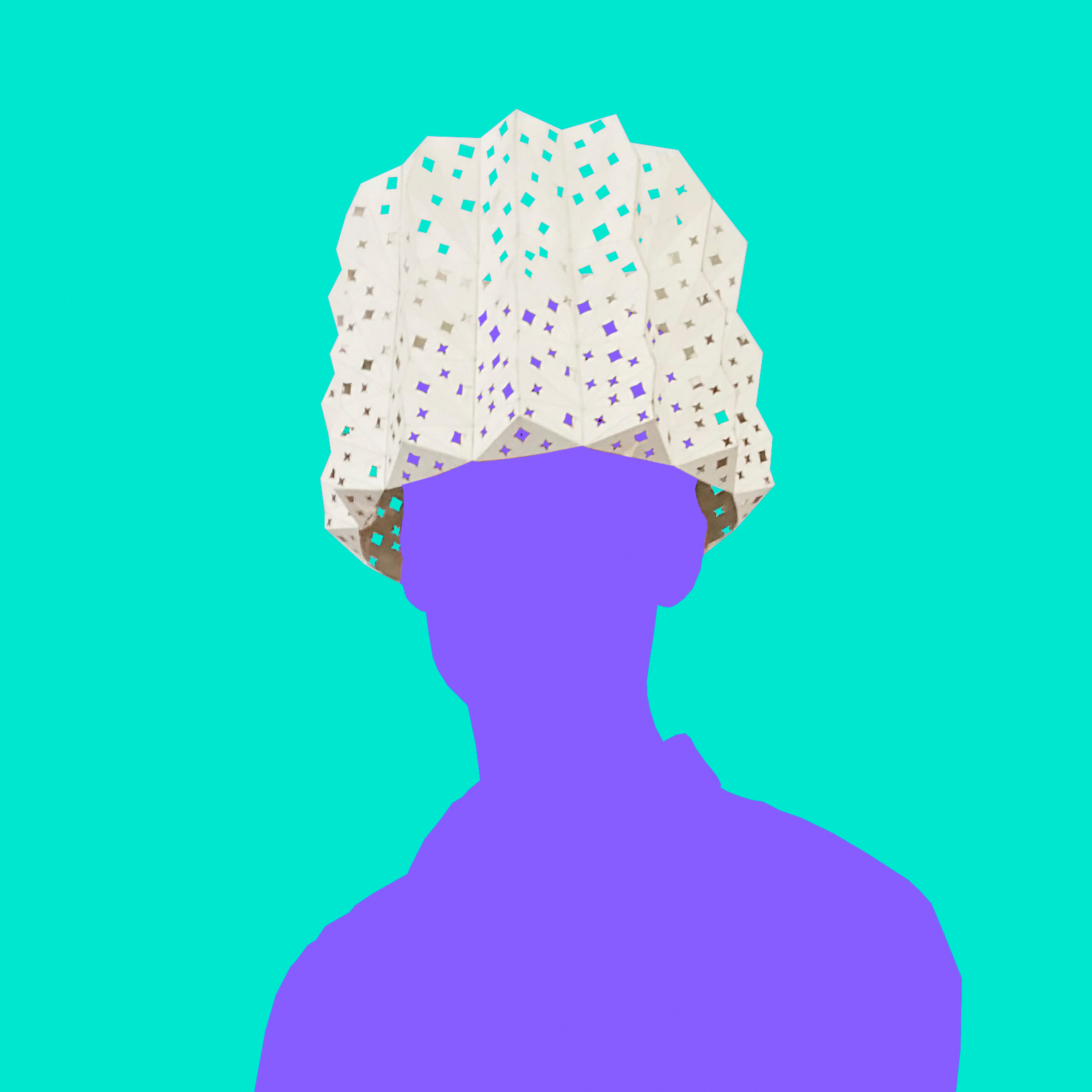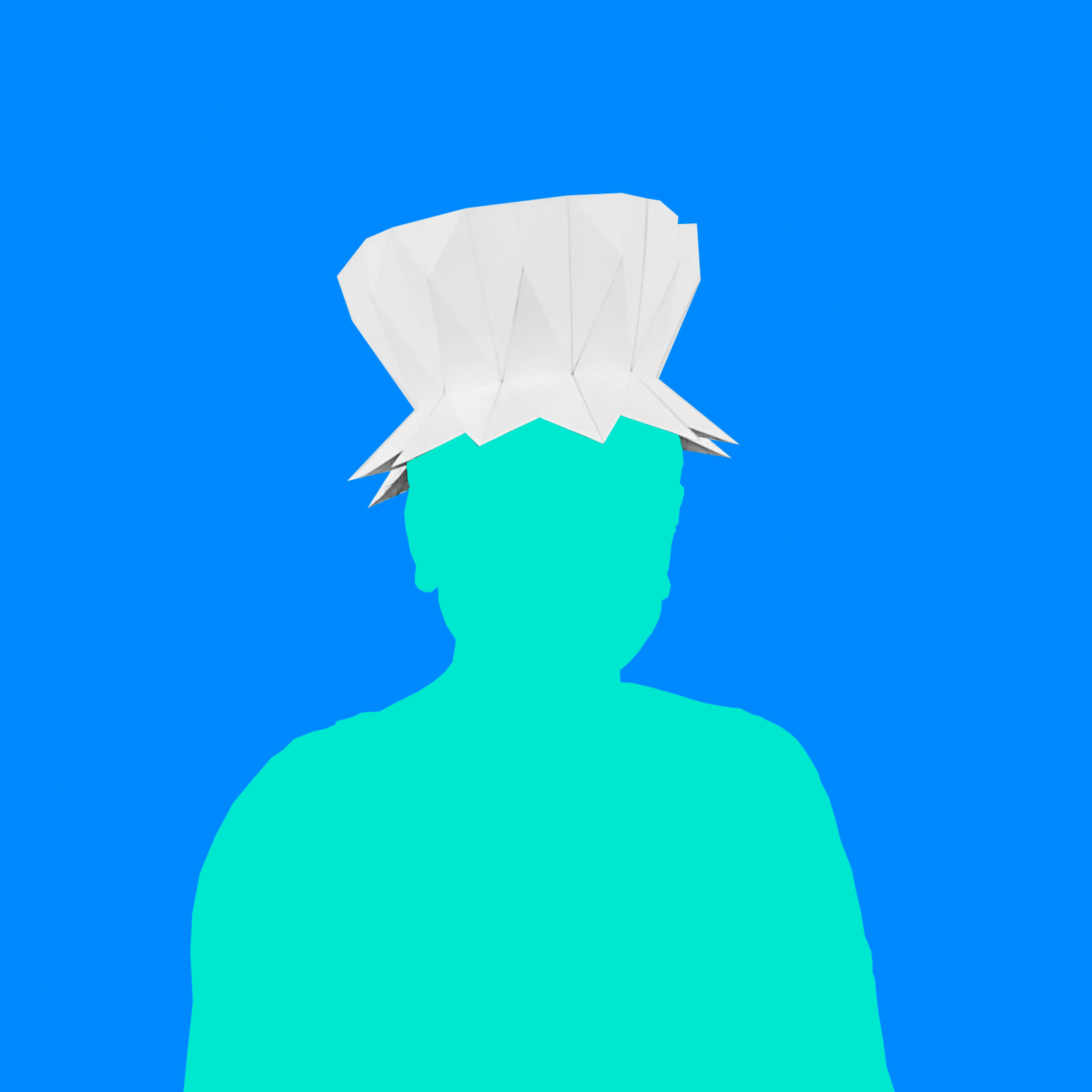


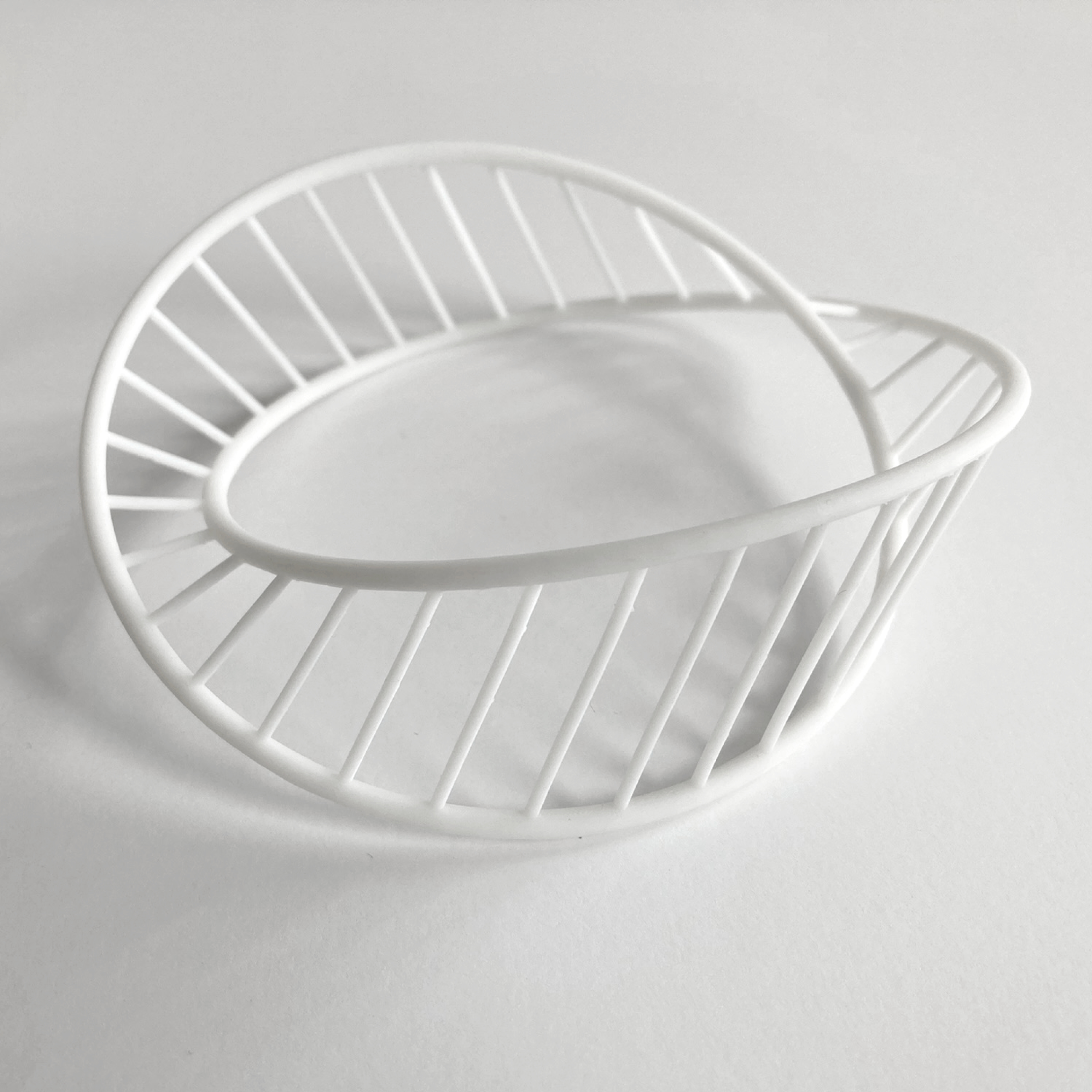

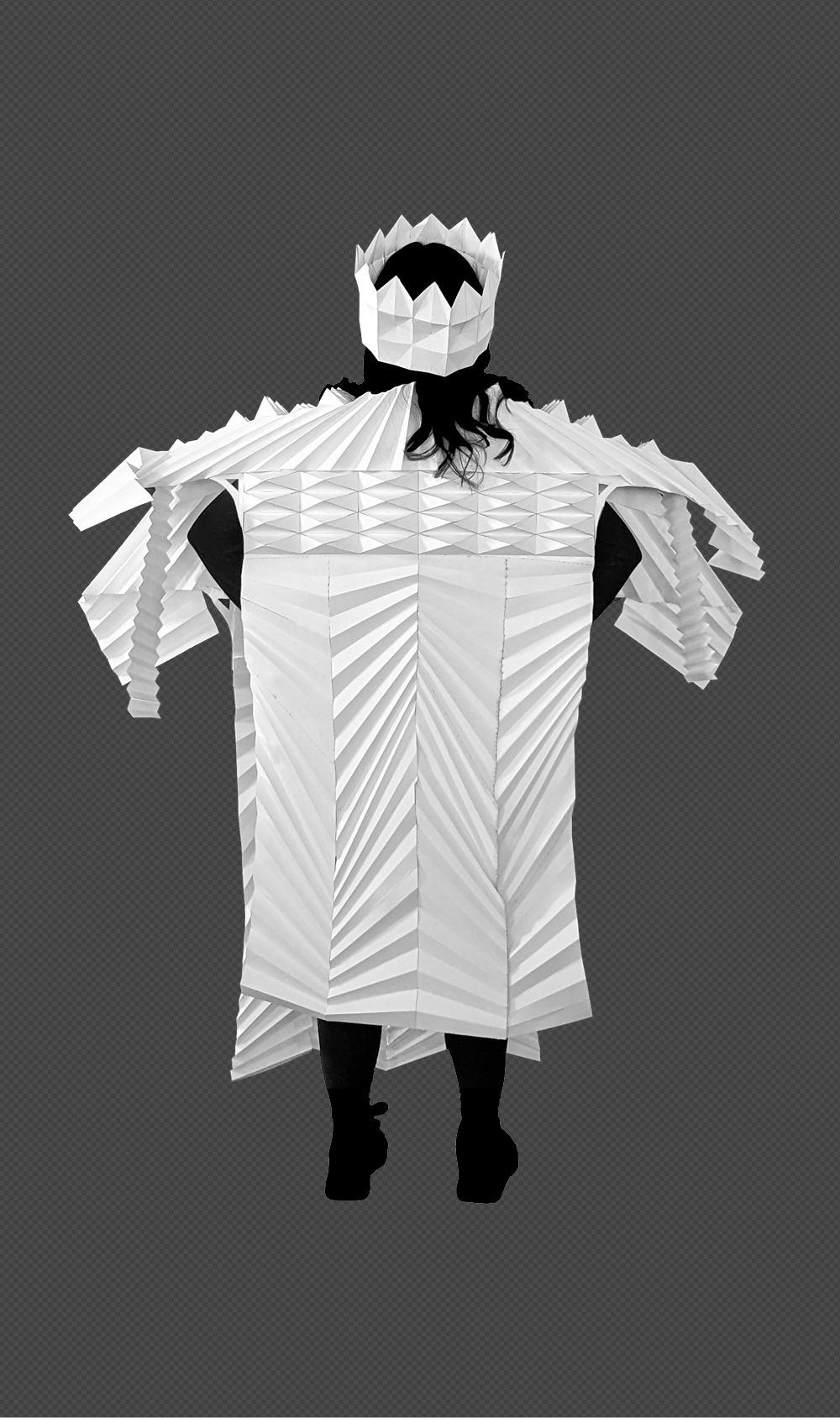


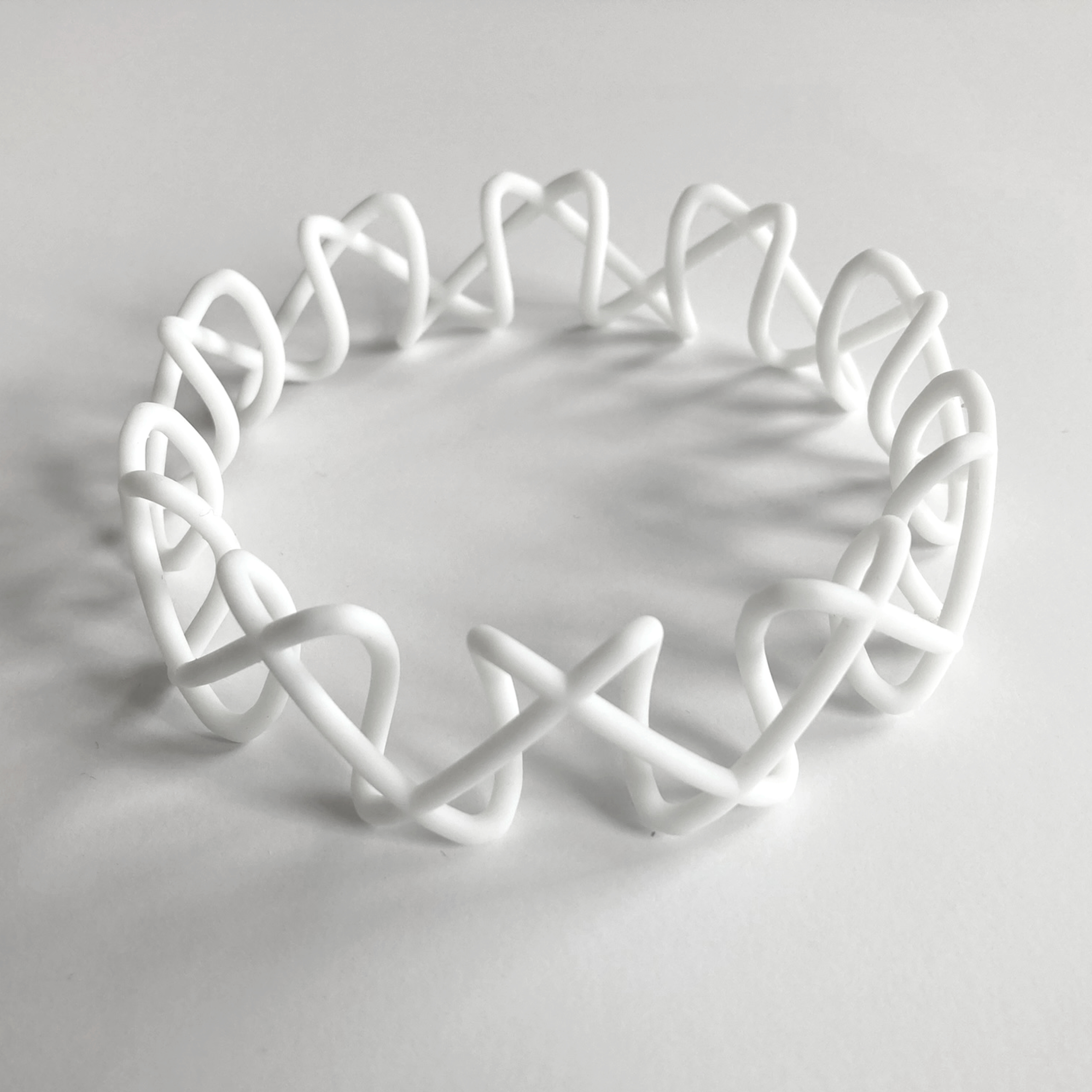



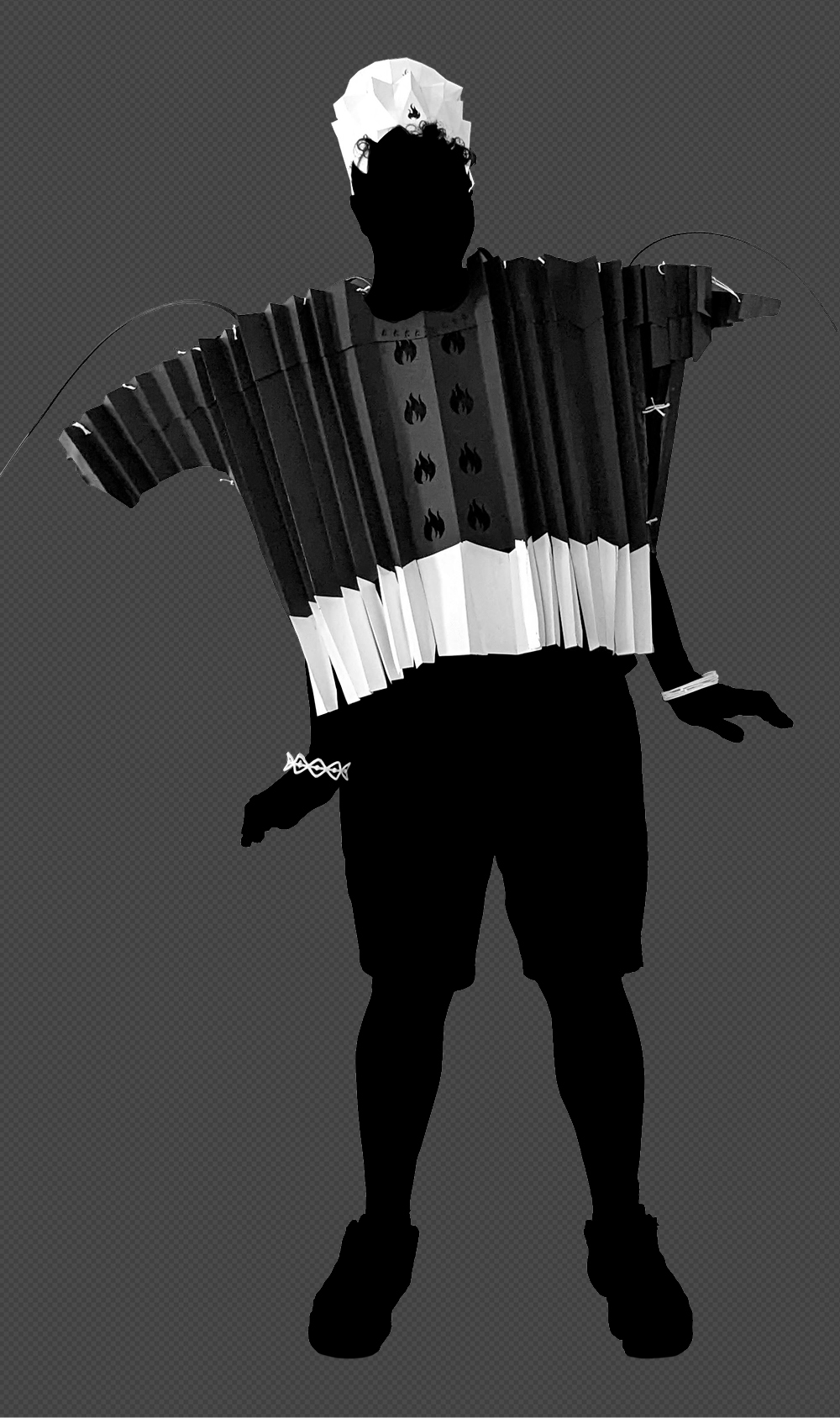
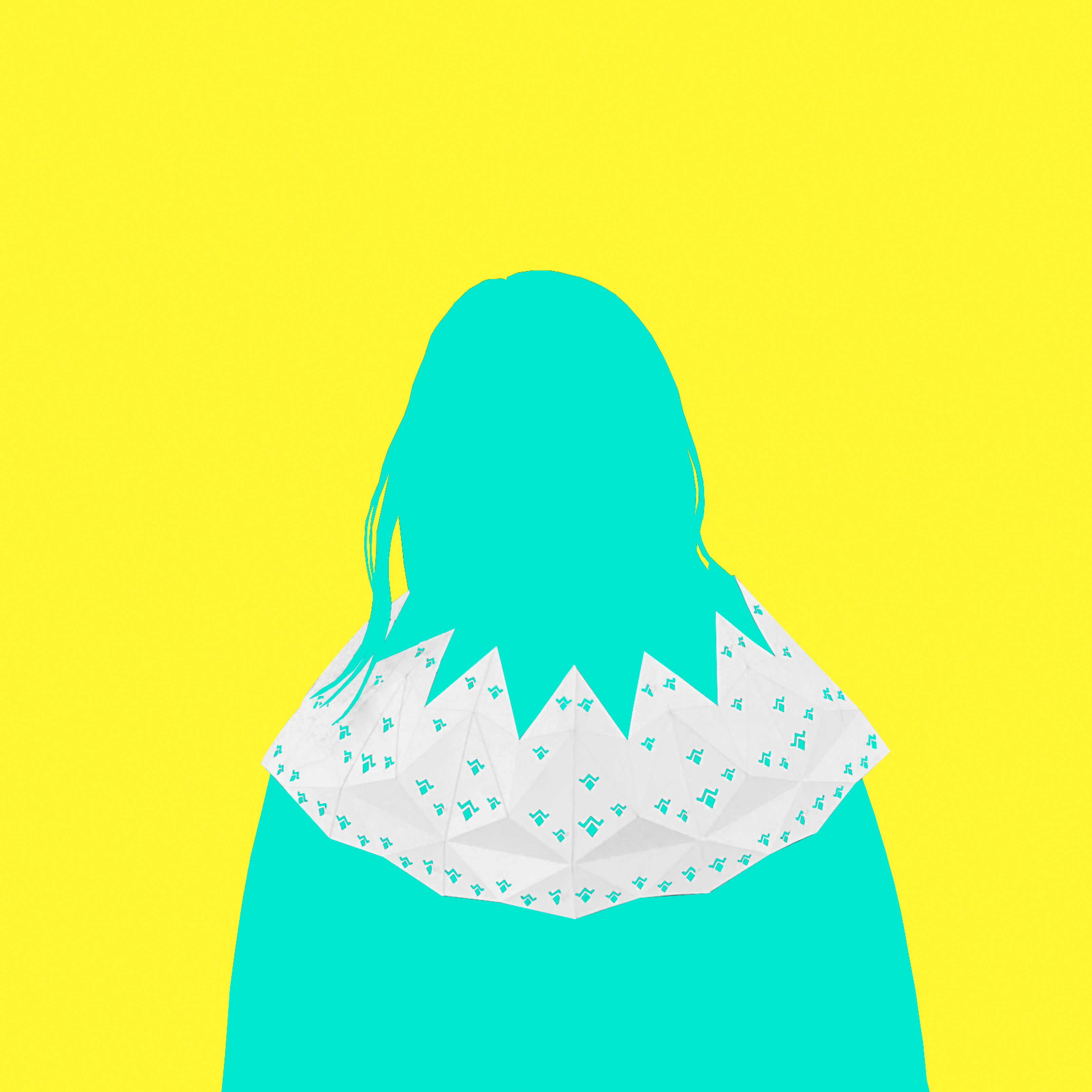

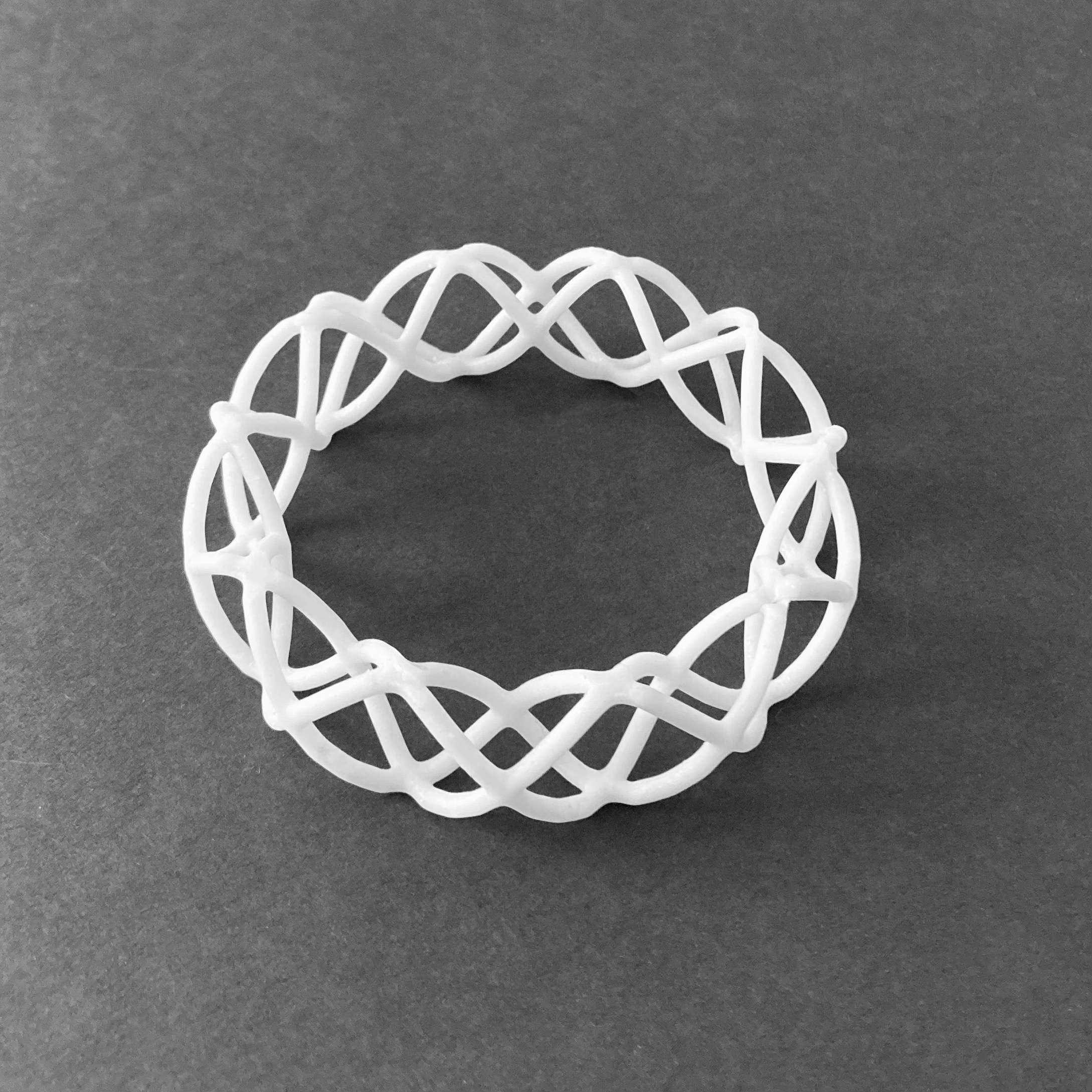

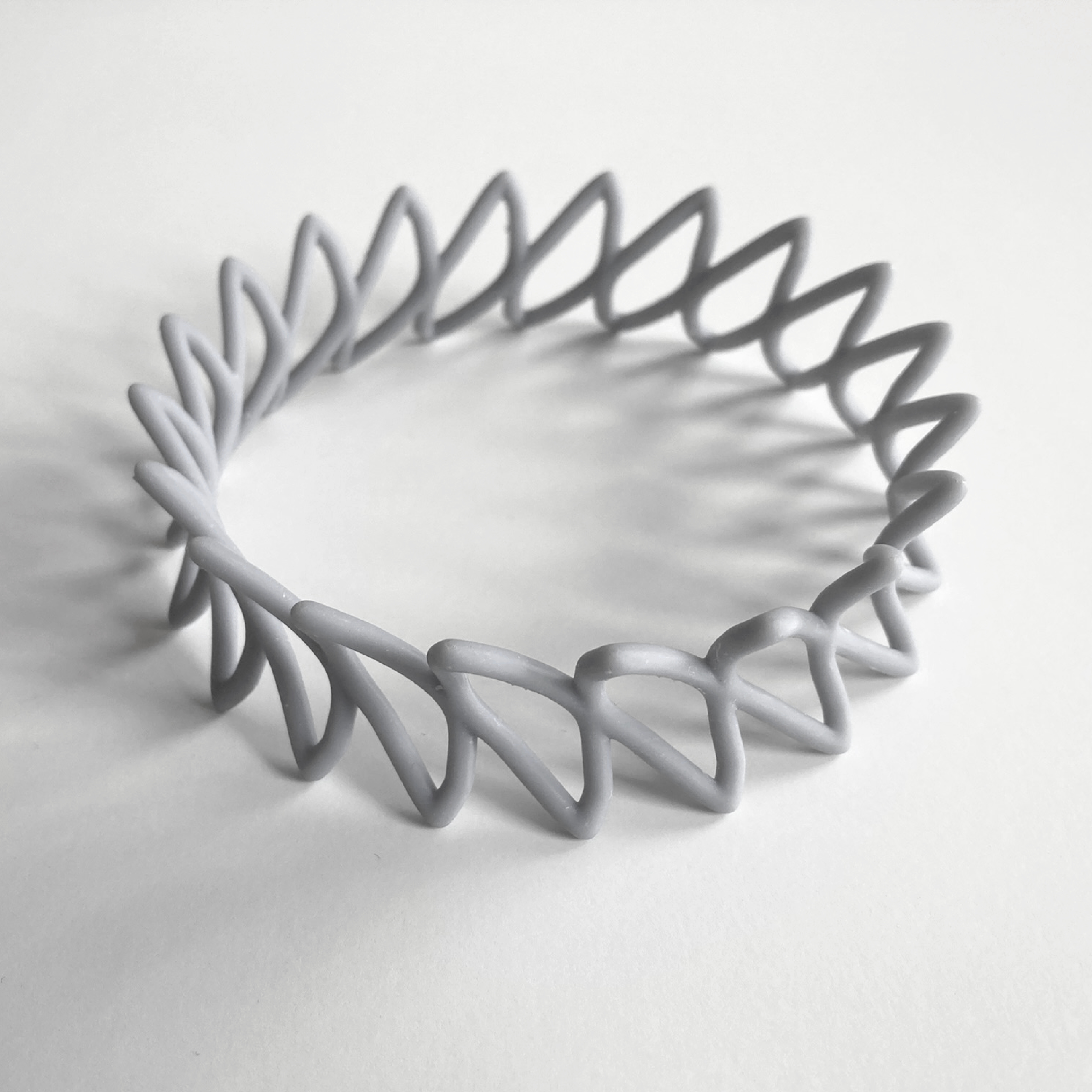





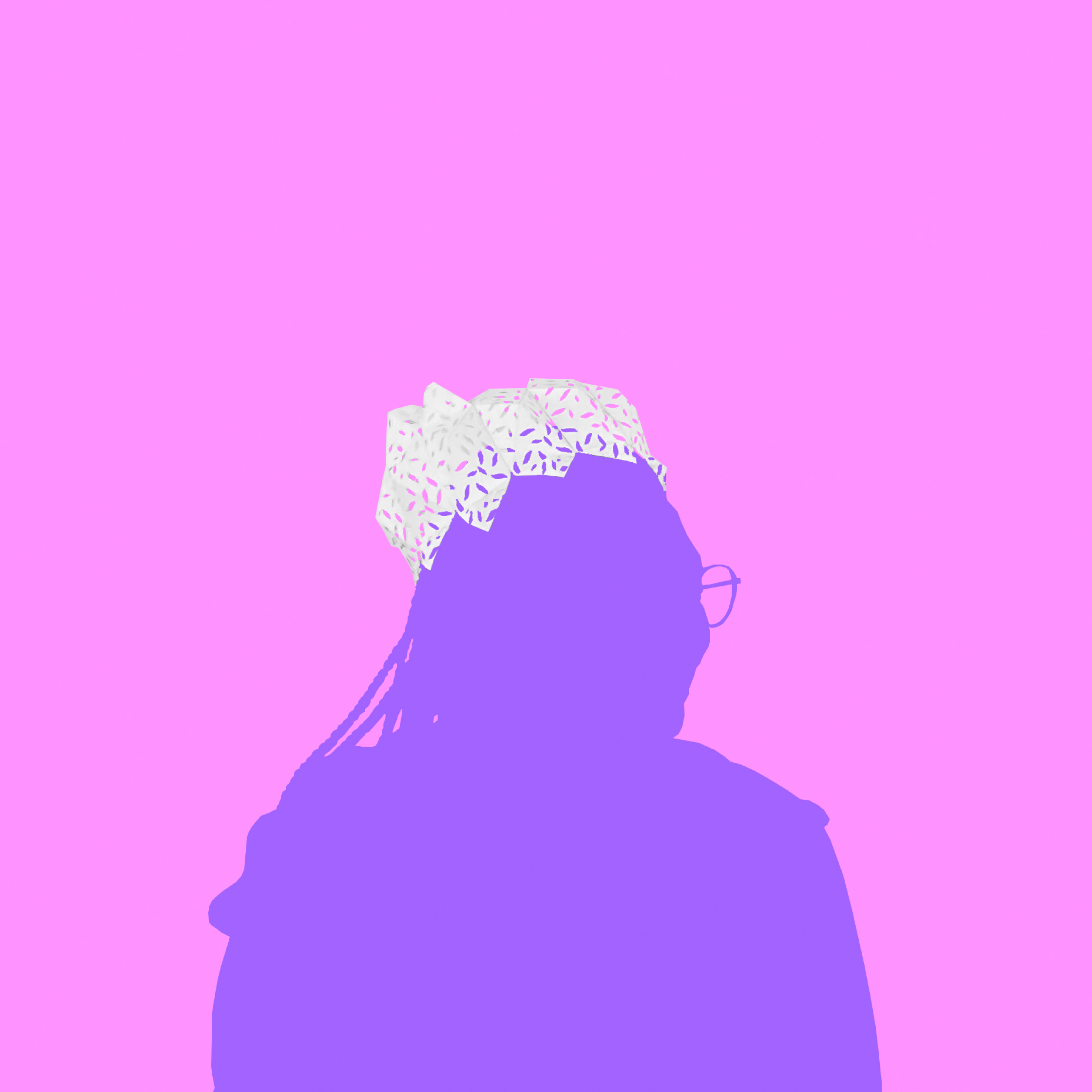
Archi-texture expands from the idea that clothing provided the first house of the human body and the notion of architect as weaver.
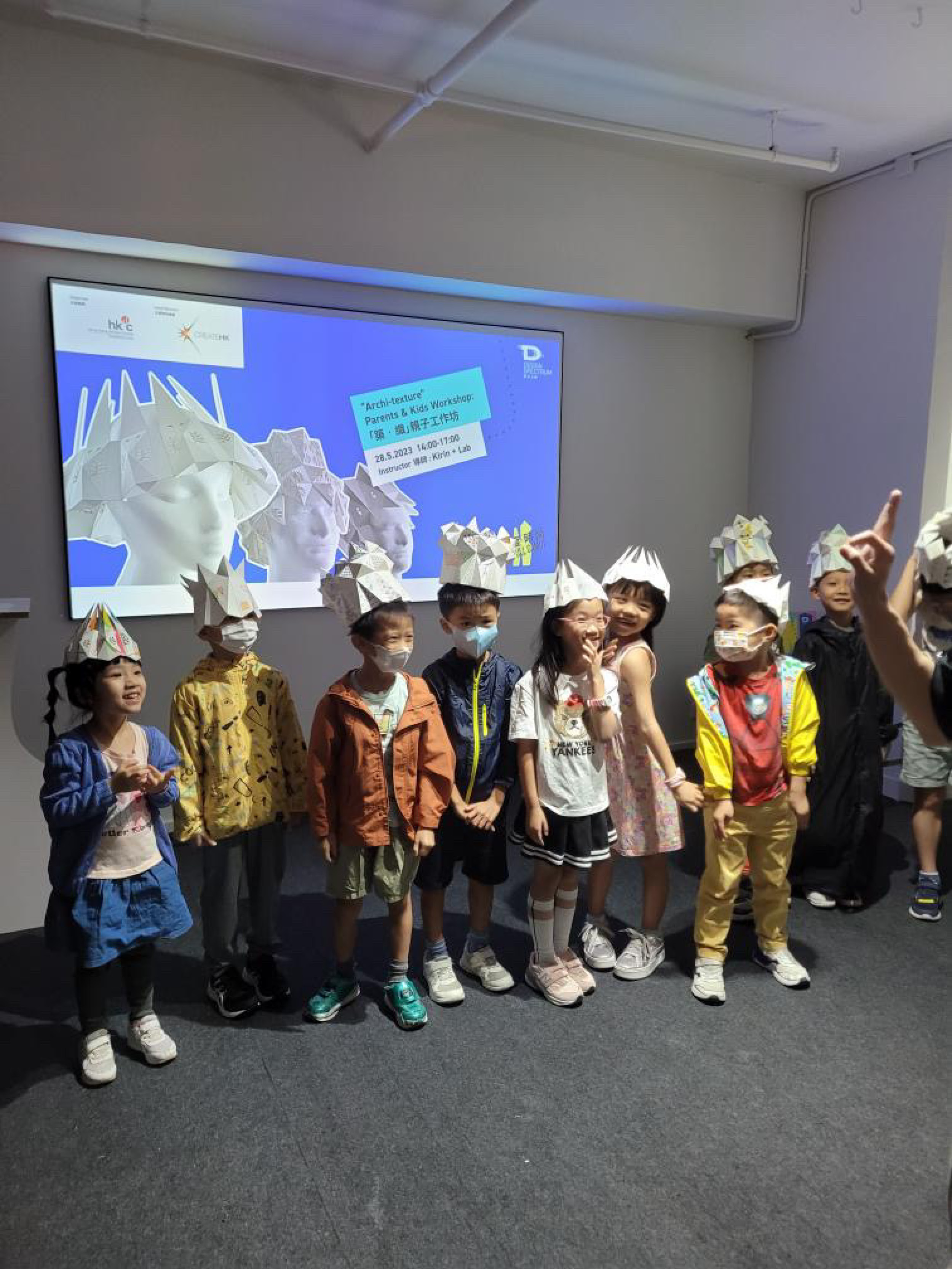


These projects explore the relationship between fashion and architecture by using the body as site and investigating media and cross-disciplinarity through a set of wearables – including headwear, limb bands, a shirt and skirt combination (sh/kirt) – created from analog and digital techniques. This body of work was produced by students taking graduate architectural media taught by faculty Maia Peck, Lukas Fetzko, and Gregory Serweta, AIA, at the University at Buffalo / Department of Architecture in the Spring of 2022 and 2023.
The 2023 spring “Archi-texture” course culminated its second “season” with a fashion show, featuring the semester’s latest line of student-designed wearables, CNC-milled foam seatscapes, and projected animations.
The graduate students’ wearables are on view in a multidisciplinary exhibition about fashion and design from May 5 through July 19, 2023, in the The Full Gamut at the Hong Kong Design Centre, China. Public Guided Tours of the exhibition are available by reservation. The exhibition was curated by Roger Wu and Vivienne Yu.
As an expansion of the “Archi-texture” exhibit, a Parents & Kids Workshop, was led by our local partner, Kirin + Lab, during which children assembled “headwear” from pre-prepared laser-cut paper templates originally designed by UB students.
Special thanks to Stephanie Cramer and her media fabrication sequence as the inspiration for the course and the University at Buffalo Fabrication Workshop for their support.
“Archi-texture” in The Full Gamut
May 5 - July 19, 2023
Hong Kong Design Centre
East Wing, 2/F Lai Chi Kok Road, Hong Kong, China
More information on Design Spectrum website:
https://www.designspectrum.hk/the-full-gamut/
The 2023 spring “Archi-texture” course culminated its second “season” with a fashion show, featuring the semester’s latest line of student-designed wearables, CNC-milled foam seatscapes, and projected animations.
The graduate students’ wearables are on view in a multidisciplinary exhibition about fashion and design from May 5 through July 19, 2023, in the The Full Gamut at the Hong Kong Design Centre, China. Public Guided Tours of the exhibition are available by reservation. The exhibition was curated by Roger Wu and Vivienne Yu.
As an expansion of the “Archi-texture” exhibit, a Parents & Kids Workshop, was led by our local partner, Kirin + Lab, during which children assembled “headwear” from pre-prepared laser-cut paper templates originally designed by UB students.
Special thanks to Stephanie Cramer and her media fabrication sequence as the inspiration for the course and the University at Buffalo Fabrication Workshop for their support.
“Archi-texture” in The Full Gamut
May 5 - July 19, 2023
Hong Kong Design Centre
East Wing, 2/F Lai Chi Kok Road, Hong Kong, China
More information on Design Spectrum website:
https://www.designspectrum.hk/the-full-gamut/
Headwear
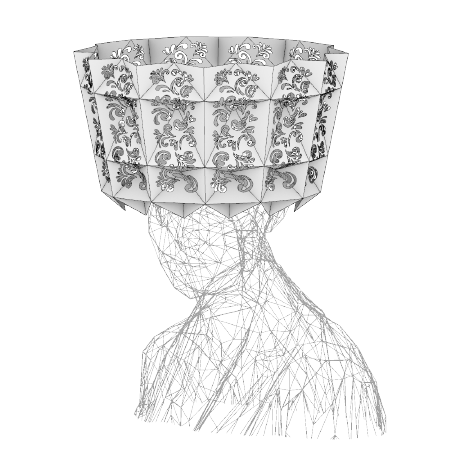

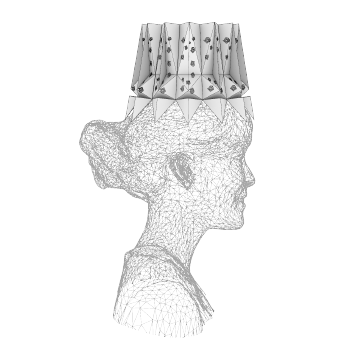

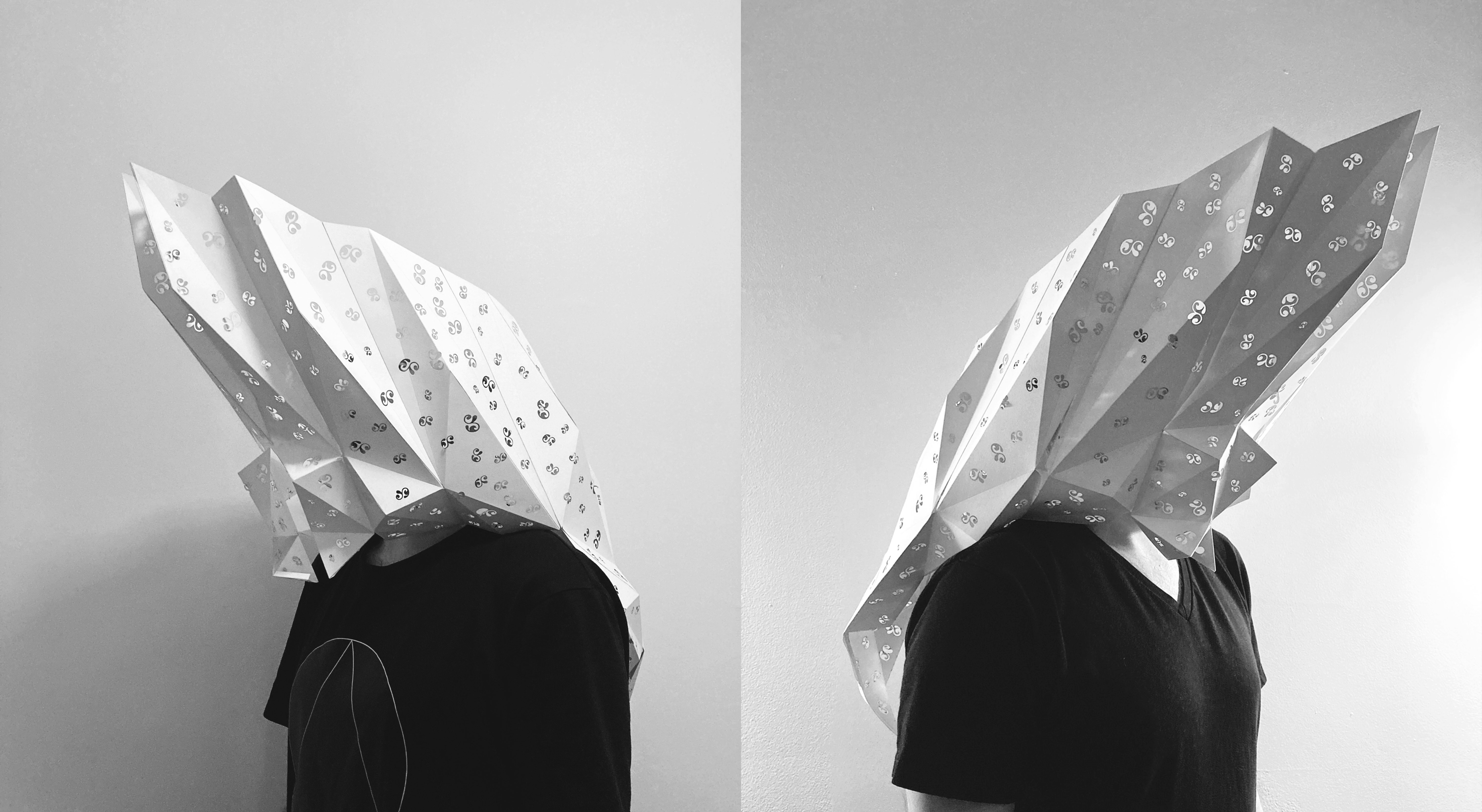
Like architecture, hats are
head coverings
employed to fulfill both practical and expressive requirements, and thus serve both utilitarian and aesthetic ends, including protection against weather conditions, ceremonial or religious reasons, safety, protection, status or as a fashion accessory.
And as in architecture, the design of headwear begins from a plane and is varied into a three-dimensional form as it confronts gravity or meets with the human body.
And as in architecture, the design of headwear begins from a plane and is varied into a three-dimensional form as it confronts gravity or meets with the human body.
Students used paper to understand the relationship of two-dimensional planes and three-dimensional modeling by converting planes to forms. Paper is “a material with infinite conformal modeling potential, and its properties differ completely depending on how it is processed,” such as through folding, pleating, or creasing.
Spring 2022














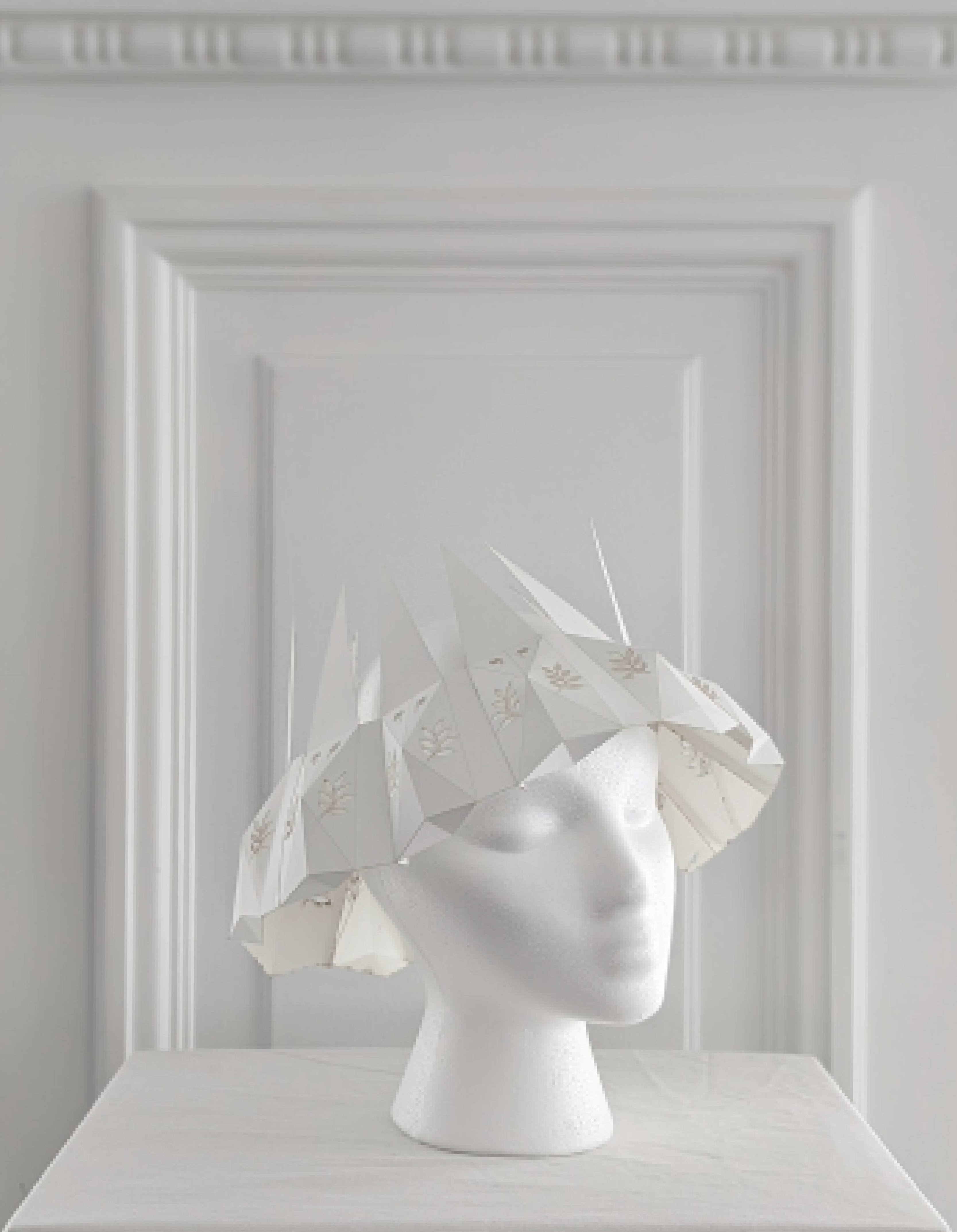



Spring 2023


